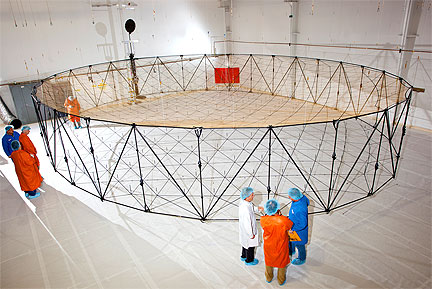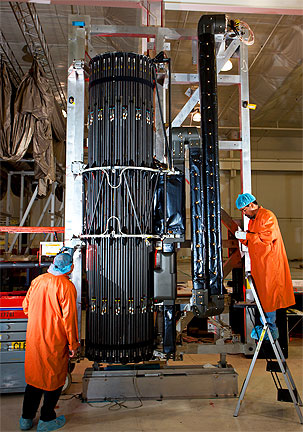
Technical staff at Astro Aerospace in Carpinteria, Calif., work on the AstroMesh reflector recently delivered to Astrium for its Alphasat I-XL spacecraft. This photo shows the reflector in its deployed configuration. (Northrop Grumman Photo)

This photo shows the reflector in its stowed configuration. (Northrop Grumman Photo)
When deployed in space, the Alphasat reflector forms a precision 45 x 38 foot (14 x 11 meter) radio frequency reflective antenna surface, which stows for launch into a compact package weighing about 135 pounds (61 Kg). Including launch support and deployment boom hardware, the total system weighs only 246 pounds (112 Kg). The reflector is a key part of the antenna system used by the spacecraft to provide broadband Internet communications. Enabled by the large reflector, the antenna system's sensitivity allows the use of mobile, laptop-size modems by users around the world. Once the Alphasat satellite reaches orbit, ground controllers will issue commands that control three hinge motors that unfold a 19 foot (6 meter) boom supporting the reflector above the satellite. Additional ground commands are sent to two motors that unfurl the reflector to its fully deployed size.

